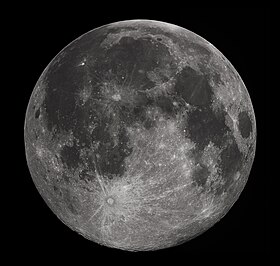U. S. had plans to nuke this moon.

you could easily skip by it within the archive search: a venture titled "A Study involving Lunar Research Flights. " Its nickname is even more low-brow: "Project A-119. inch
But the reality was a lot more explosive.
It was a top-secret plan, developed from the U. S. Air Drive, to look at an opportunity of detonating a nuclear device within the moon.
It was hatched in 1958 - a time when the usa and the Soviet Union were locked in a very nuclear arms race that may last decades and drive both superpowers to the edge of nuclear war. The particular Soviets had also merely launched Sputnik 1, this world's first satellite. The particular U. S. was falling behind within the space race, and needed a huge splash.
"People were worried completely by (first human in space Soviet cosmonaut Yuri) Gagarin and Sputnik as well as the very great accomplishments of the Soviet Union then though, and in comparison, the usa was feared to possibly be looking puny. So this was a notion to sort of reassure people that the usa could maintain a mutually-assured deterrence, and therefore avoid any huge conflagration within the Earth, " said physicist Leonard Reiffel, which led the project.
Reiffel, at this point 85, spoke to CNN in his home in Chi town. A 1959 report Reiffel wrote within the project, declassified many in years past, was obtained online through CNN.
According to Reiffel's statement, "The motivation for this kind of detonation is clearly threefold: controlled, military and political. inch
The military considerations had been frightening. The report said a nuclear detonation within the moon could yield data "... concerning the ability to nuclear weapons for area warfare. " Reiffel said in which in military circles right at that moment, there was "discussion of the moon as military excessive ground. "
That included talk of obtaining nuclear launch sites within the moon, he said. The particular thinking, according to Reiffel, was that if the Soviets hit the usa with nuclear weapons first and destroyed the U. S. ability to strike back, the U. S. could launch warheads on the moon.
"These are terrible concepts, " Reiffel mentioned, "and they are hopefully planning to remain in the dominion of science fiction for your rest of eternity. inch
The basic plan, Reiffel discussed, was for an intercontinental ballistic missile for being launched from an undisclosed place, travel some 240, 000 miles towards moon, and detonate on impact. Various news reports since 1958 have said project leaders considered utilising an atom bomb the exact same size as "Little Child, " the bomb that's dropped on Hiroshima, Okazaki, japan, near the end involving World War II.
Reiffel, who had been cited for that data in those reports, at this point says he wasn't in on those discussions.
Unlike some reports, Reiffel informed CNN, the device won't have "blown up" this moon. "Absolutely not. It might have been microscopic, so to speak. It would have been recently, I think, essentially invisible on the Earth, even with a good telescope. "
Reiffel had some brilliant minds on his team. One of which was an up-and-coming graduate student named Carl Sagan. Sagan went on to become among the world's most renowned astronomers, generating the book and common TV series "Cosmos. inch
But after working within the moon program, Reiffel mentioned, Sagan violated security whenever he mentioned the still-classified project on the job application. "He did formally break the classification status of the project", Reiffel said involving Sagan, who subsequently past away in 1996.
Sagan's widow, Ann Druyan, told CNN she's unsure if Sagan ever smashed the classification, but if he did, she mentioned, it wasn't intentional. "I can't imagine he'd have done that knowingly, inch Druyan said.
By 1959, Challenge A-119 was drawing a lot more concern than excitement.
"We didn't want to clutter up the natural radioactivities of the moon with additional components of radioactivity from the Earth, " Reiffel said. The particular project was abandoned.
Project planners also weren't certain of the reliability of this weapons, and feared people backlash in the U. S. would be considerable, " Reiffel said.
"It disappeared within the files of the Pentagon", he said of the project. "They come up using what I believe was the best answer. "











0 comments:
Post a Comment